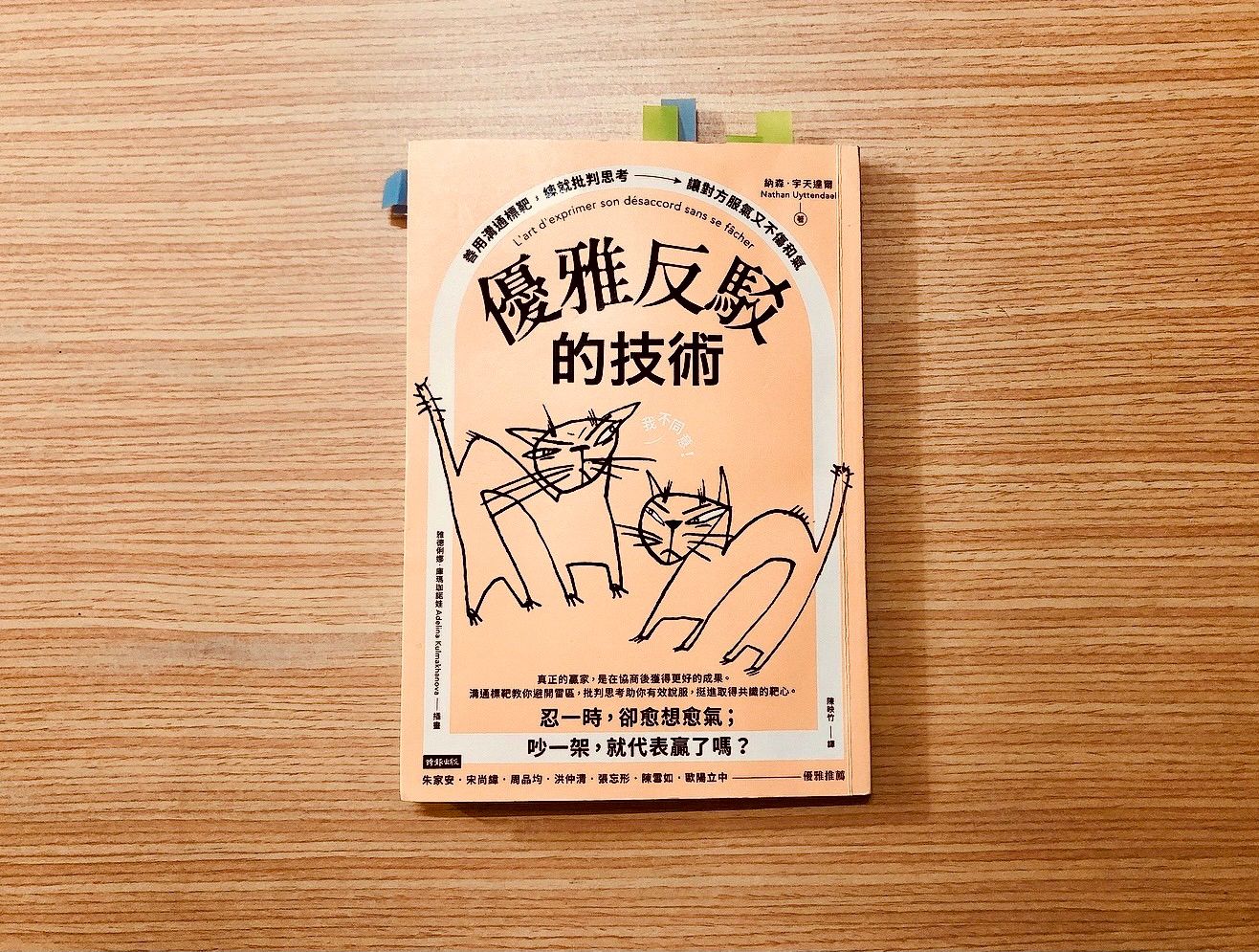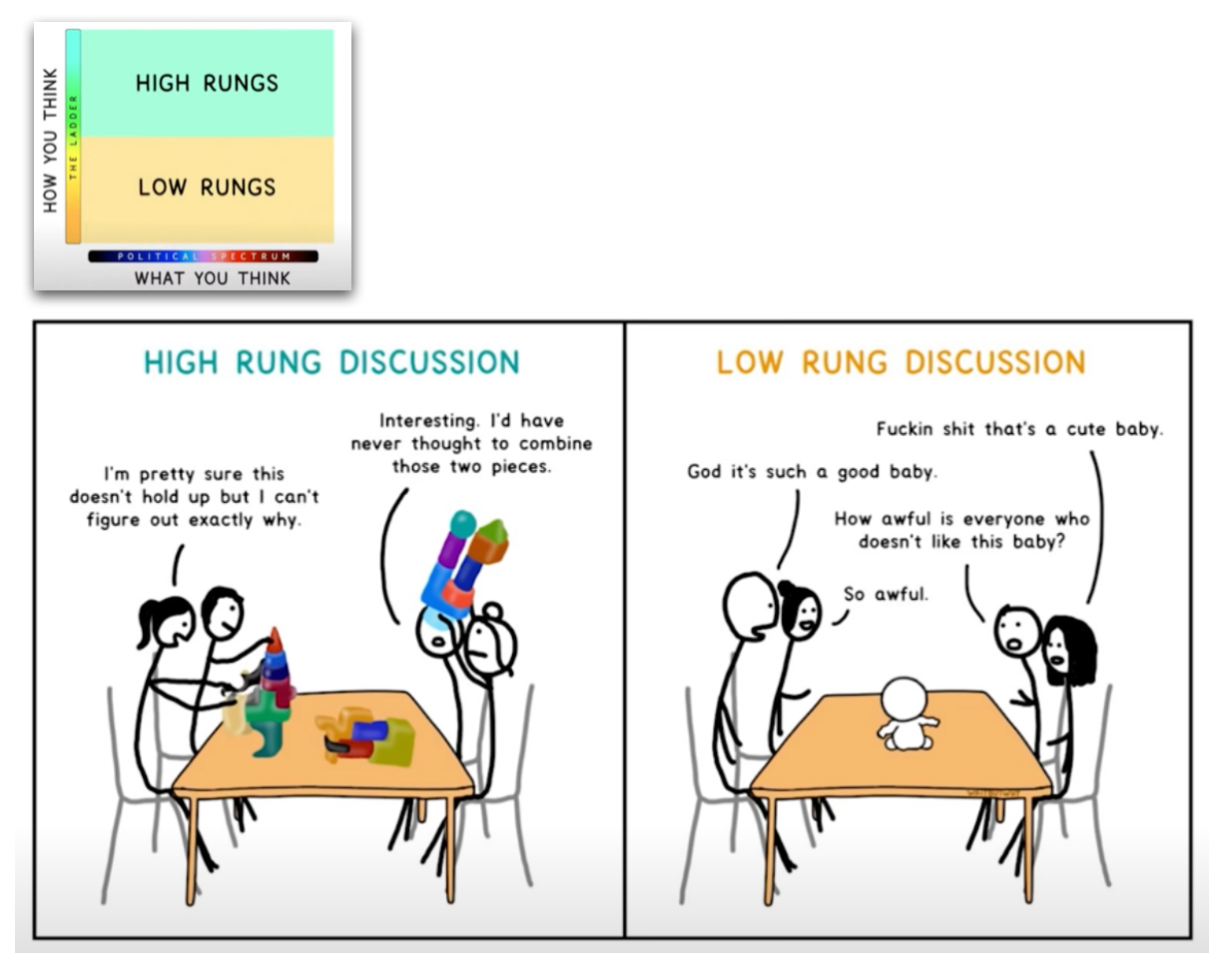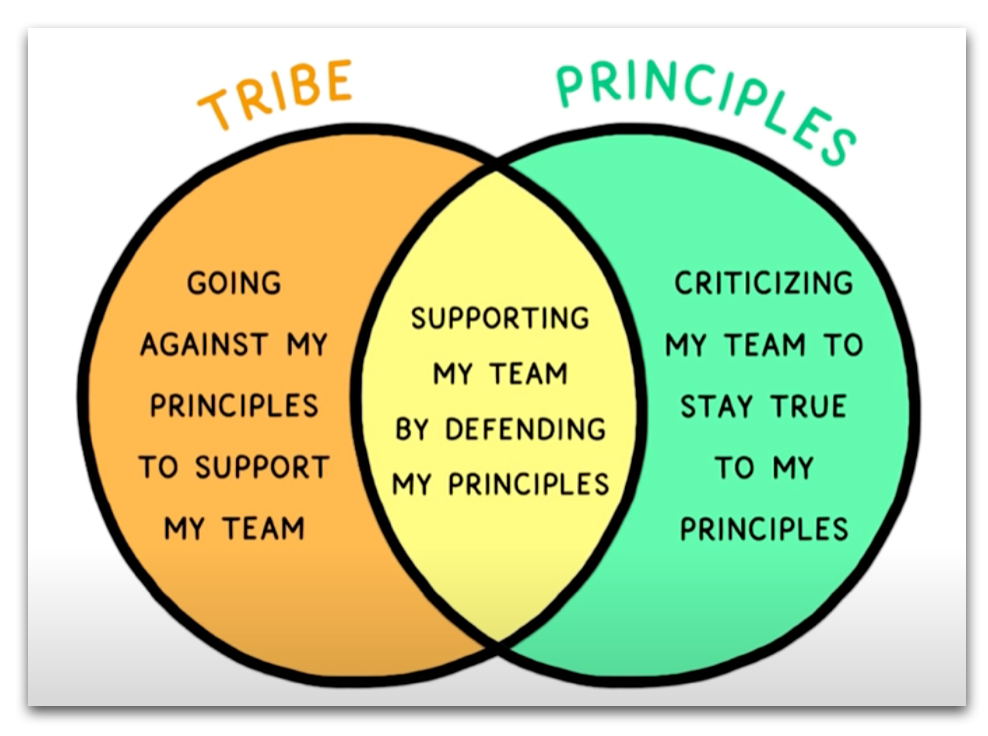"The Technique of Elegant Refutation" Are you high gradient or low gradient?
Author: Nathan. Nathan Uyttendaele
Translator: Chen Yingzhu Illustrator: Ya Delina. Adelina Kulmakhanova
Publisher: Times Publishing

" The Technique of Elegant Rebuttal " is a short and concise book, and the author hopes to contribute to " improving the quality of communication " through the publication of this book. The first half introduces Graham's Target and discusses each ring in turn (from the outside in); the second half lists seven common communication noises.
■ Graham's Target
This target originated in March 2008, when computer scientist Paul Graham published an article on his blog called " How to Disagree ". According to the hierarchical structure of the pyramid, he divided the various ways of expressing different opinions (according to the frequency of use) into layers, and nifty netizens translated it as " Pyramid of Mouth Cannons ".
Since the appearance of the shape will make people think that the lower layer is the foundation to support the upper layer, some people have proposed improvements one after another, and the presentation in the form of a target is one of the modernization transformations.

■ High Gradient vs Low Gradient
It seems like hearing Tim Urban 's speech on " All-In-Podcast " not long ago, he dissects what went wrong in a (political) discussion? To think that the sticking points are pushed to the left and the right—the opposite ends of the opinion spectrum—is simply misplaced. In the original situation where only focus on "What you think" (X-axis), a new "How you think" axis (Y- axis) should be added.

And "How you think" can be simply divided into high gradient (High rungs) and low gradient (Low rungs), which just echoes the "Thank you for discussing this topic with me" flow chart in the book.
In high-gradient discussions, although the two sides have different positions, they are willing to abide by common rules in order to achieve the common goal of "pursuing the truth" . It seems that in the process of assembling Lego bricks, if we find that our argument is wrong, we are willing to remove this material, accept that the opponent is indeed reasonable at a certain point, and then use it to correct our own construction.
In the low-gradient world, it should not be called "discussion" at this time, and it will become "preaching". Treat the proposition as an inseparable treasure, as if it were a holy baby, the triple is more important than the principle . To put it more vernacularly, it is "using people's nonsense" or "people's words"!

When I first saw the title of the book, I thought it was a book that taught you how to "quarrel". After all, the word "rebuttal" was so eye-catching that it caused a lot of ripples in my heart. Looking at it as a whole, it has changed. I feel that it is biased towards a good set of "rules of procedure" in popular science. What are the DOs and DON'Ts ?
In addition to "What you think", we also pay more attention to "How you think". Let's stand up the ladder and climb higher together.

🌱 Join [ Zhongshu Nervous System ] around the fireplace👇
The special topic #Reflections on writing and #頭内心話is being serialized.
🌱 I am on other platforms👇
【 Facbook | Twitter | Liker Social | Matters | Medium | vocus 】
🌱 My teaching text and invitation link👇
≣Sign up for noise.cash | Become a "noise coffee" and experience social finance together .
≣Sign up for Presearch | The search to earn that kills three birds with one stone.
≣Sign up for MEXC | Go and jump on the Matcha Exchange, cash out OSMO and run wool .
≣Sign up for Potato | Three things to learn from Potato Media .
Like my work? Don't forget to support and clap, let me know that you are with me on the road of creation. Keep this enthusiasm together!










- Author
- More